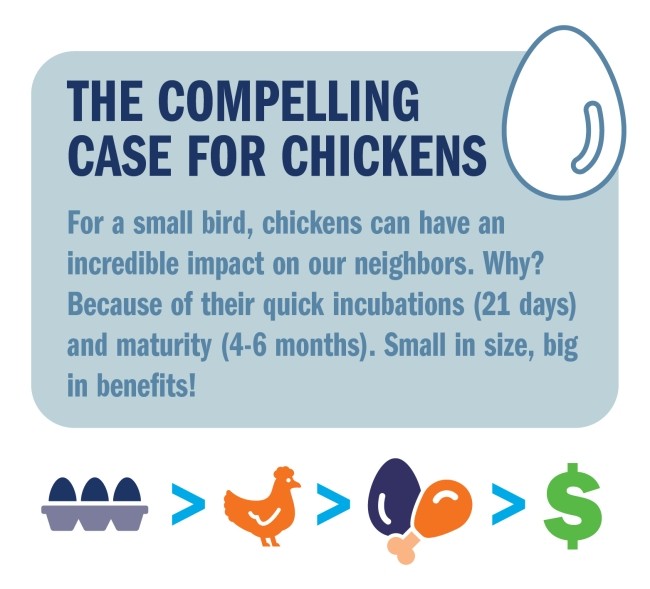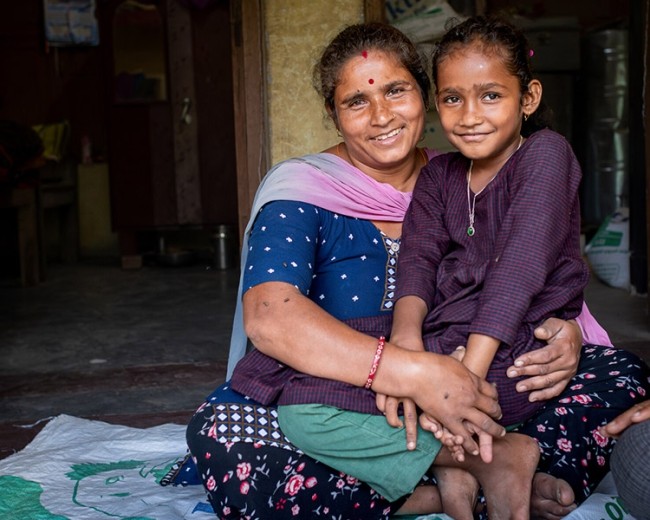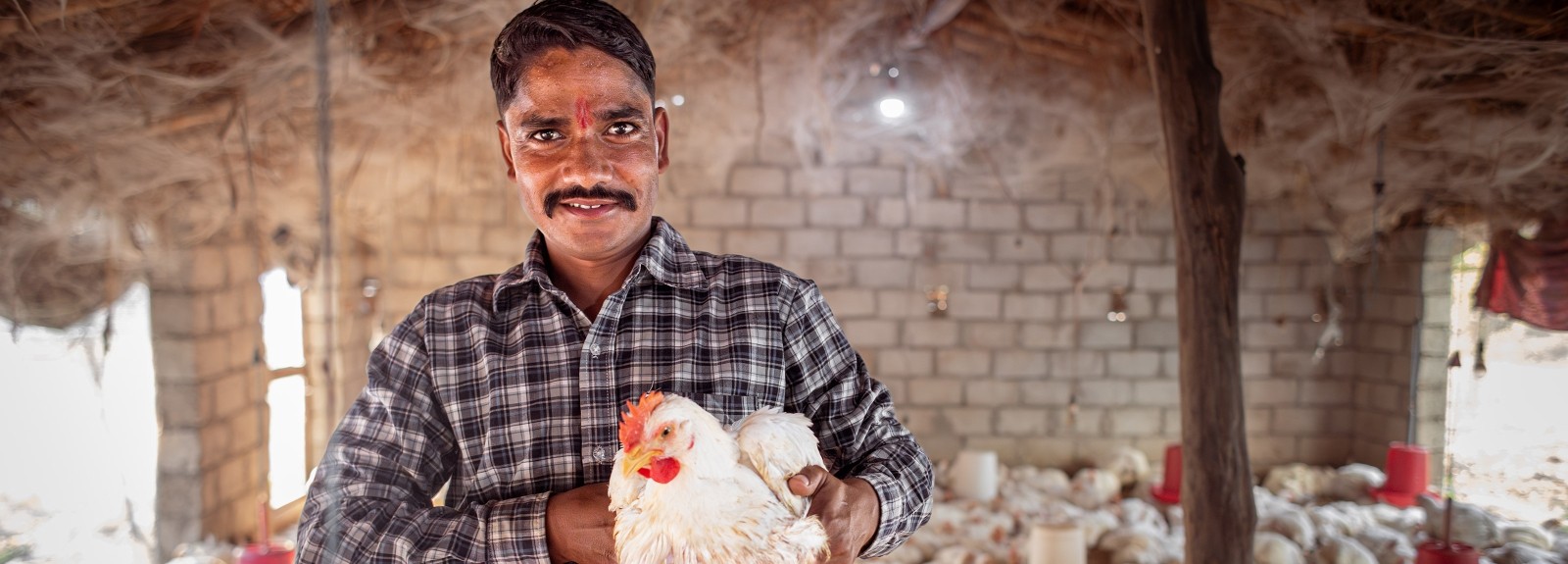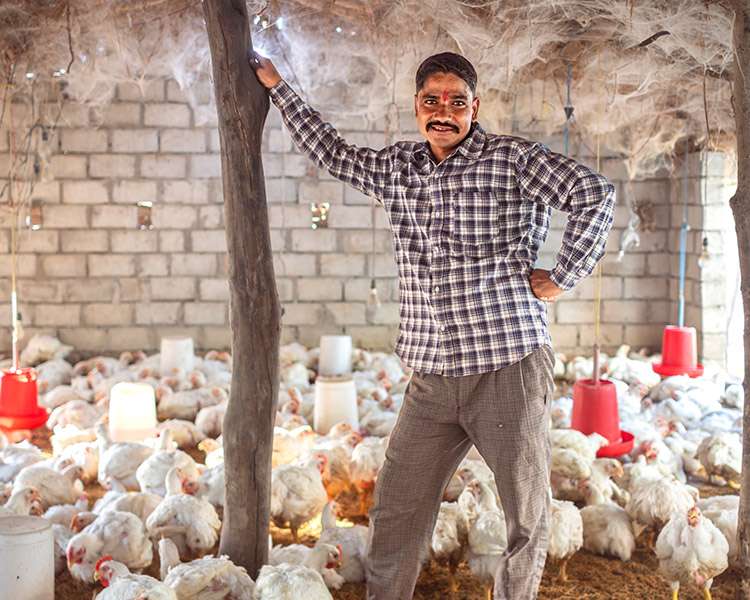When disaster strikes, families often face overwhelming uncertainty. Questions such as “What’s next?” can often come quickly to those surrounded by devastation. The future feels uncertain, and stability seems out of reach.
Thankfully, your lifeline goes beyond urgent needs, helping our neighbors rebuild and be more prepared going forward.
Did you know that livestock is one of the most powerful tools in building resilience?

For years, Bikram BK and his family struggled to find stability in Kanchanpur, Nepal. Despite his education, his teaching income couldn’t support his wife, Puspa, and their daughter, Shrisha. Financial struggles forced Bikram to move to India for work, visiting home just twice a year, while Puspa raised their daughter and managed their household alone.
When he lost his job during the pandemic, Bikram returned home after nearly six years away. While this change brought uncertainty, it also became a turning point.

Puspa with her daughter Shrisha at their home.
“We are much happier,” Puspa says of their lives now. “The family is together.”
Through the support of compassionate donors, he received 125 chicks, farming supplies, and training to become a poultry farmer. This modest beginning grew into a successful business with 800 chickens. With his new income, he purchased additional livestock, including goats, a pig and a buffalo.
Bikram’s farm not only provides for his family today; it also allows them to prepare for a better tomorrow. He shares his story with others in his community, so they can become more resilient in times of change.



